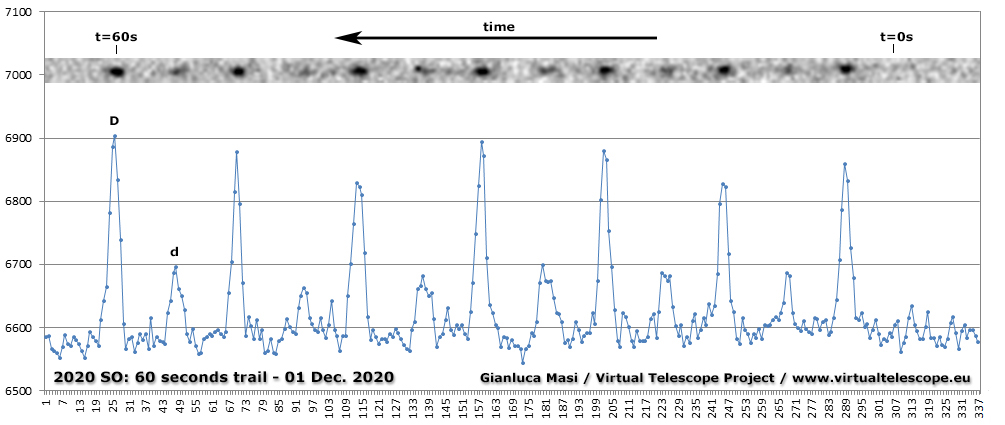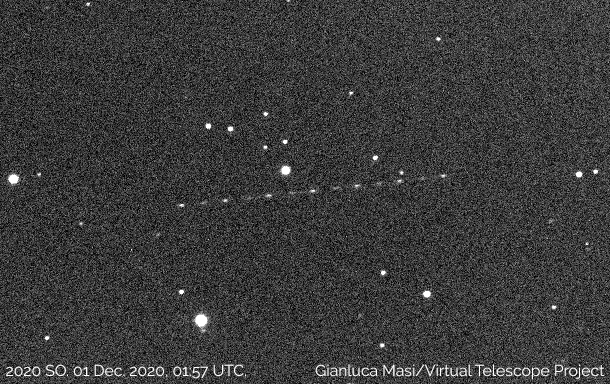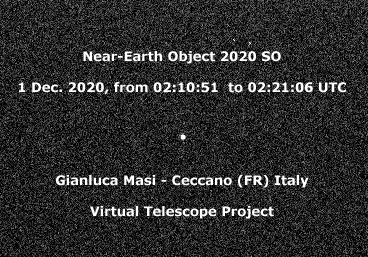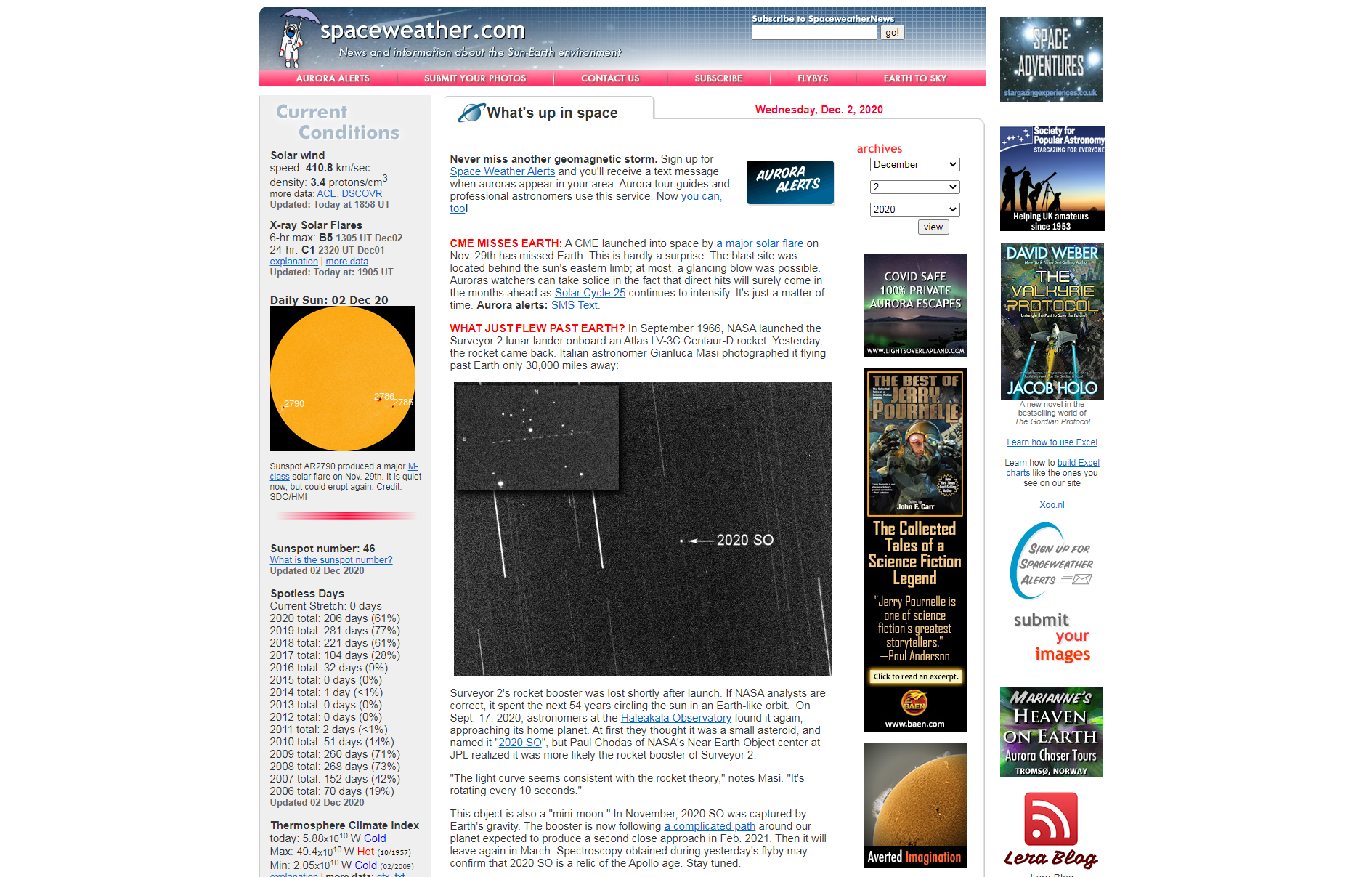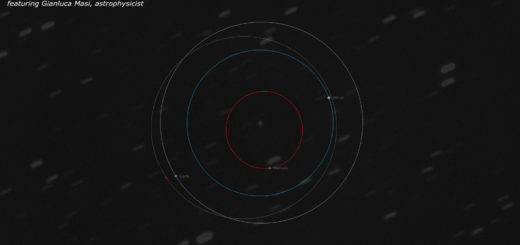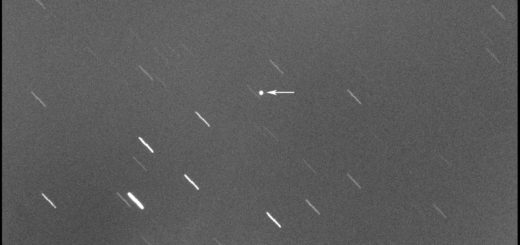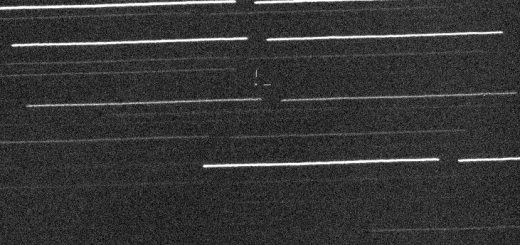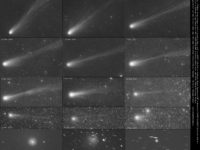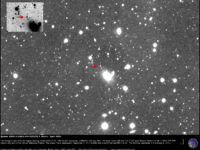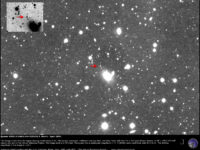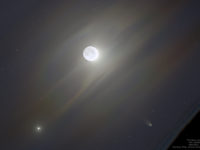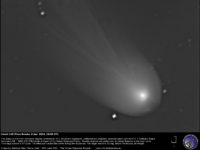Near-Earth object 2020 SO: rotation and time-lapse – 01 Dec. 2020
We present a time-lapse and a lightcurve of 2020 SO, very likely the booster involved in the launch of the Surveyor 2 spacecraft to the Moon in 1966. See how it was blinking!
After presenting our images here, we managed to carefully process the one showing the trail of 2020 SO, posted below for your convenience.
The image above comes from a single, 60-seconds exposure, remotely taken with the “Elena” (PlaneWave 17″+Paramount ME+SBIG STL-6303E) robotic unit available at Virtual Telescope. The telescope tracked at the ordinary, sidereal rate, so the object – which was moving pretty fast – left a trail. The object was moving from right (West) to left (East) in the image above.
As you can see, the trail consists in a series of dots, with a simple pattern: a bright doth (D), a much fainter one (d) and so on. Clearly, this happened because 2020 SO was spinning and in the time span between two bright (or faint) dots it completed a full rotation. Measuring the brightness of the trail, from one end to the other, we obtained the plot at the top of this post. This patter is something similar to what we have seen on other artificial sats.
Looking at the image, we see we captured six complete cycles; checking the first bright dot on the right, we see a earlier faint trail, but the faint dot was not recorded. On the other side, the first bright dot on the left shows no evidence of a later faint trail. After some careful inspection, we concluded we captured 6.4 cycles.
In other words, 6.4 cycles were covered in 60 seconds, this providing a spin rate of 9.37 seconds. This is in very good agreement with results coming from time-resolved photometry.
We also managed to create a movie from 91 basic frames, captured back to back. In the resulting media, 2020 SO is seen blinking a lot.
Measuring the brightest and faintest images, we get an amplitude of about 2.5 magnitudes: this suggests a 10:1 ratio between the maximum/minimum dimensions of the target (phase angle is not taken into account). Of course, this can also be explained by the presence of regions with very different albedo (amount of light reflected by a given surface) on its surface).
It is worth to remember that 2020 SO was temporarily captured by our plane and it will be our mini-moon until Mar. 2021, when it will be free again. Before that, it will safely come to say bye next 2 Feb. 2021: we are ready!
Support The Virtual Telescope Project!
Support us! Please, donate and receive unique, LIMITED EDITION set of images of the stunning comet 12P/Pons-Brooks with Andromeda Galaxy, of potentially hazardous asteroids, space stations and much more, specifically made for supporters like you!
(you can adjust the amount later)

